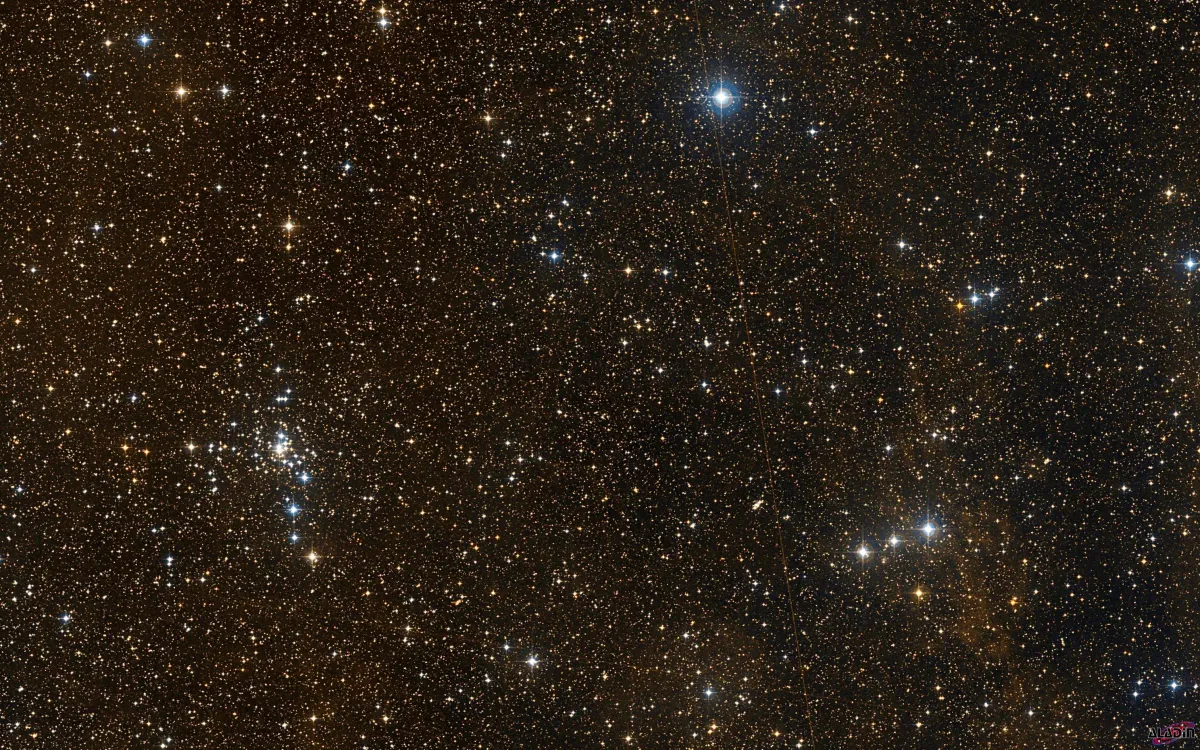Great Bird Cluster (NGC 2301)

History
This open cluster was discovered by William Herschel on 27 December 1786 and listed as IV 27. He described it as «a very beautiful cluster of much compressed small and large stars of many sizes, above 20' diameter.» [464] John Herschel observed it four times and listed it as h 413. On 27 January 1832 he noted: «Double star in the chief group of a prety rich coarse cluster, not very compressed. Broken into 3 groups. The south preceding group is the richest.» [466]
NGC 2301 received the nickname «Great Bird Cluster» by astronomer and author Phil Harrington, because the pattern resembles a bird in flight. Its wings are formed by the string of stars, with a three-sided body. [692]
Physical Properties
| Designation | NGC 2301 |
| Type | OCL (I3m) |
| Right Ascension (J2000.0) | 06h 51m 45.2s |
| Declination (J2000.0) | +00° 27' 33" |
| Diameter | 15 arcmin |
| Visual magnitude | 6.0 mag |
| Metric Distance | 0.858 kpc |
| Dreyer Description | Cl, Ri, L, iF, st L & S |
| Identification, Remarks | WH VI 27; h 413; GC 1465; OCL 540 |
Finder Chart
The open cluster NGC 2301 is located in the constellation Monoceros. The best observation time is September to June, when it is highest at night.
